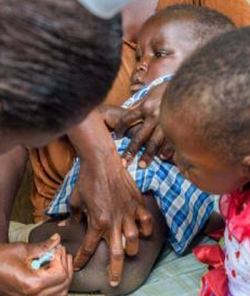Prevalence and correlates of anaemia among children aged 6 to 59 months in Nigeria
Abstract
Background: Anaemia remains a global public health challenge affecting children aged 6 to 59 months. This study aimed to estimate the prevalence and identify the correlates of anaemia among children aged 6 to 59 months in Nigeria.
Methods: Data were drawn from the 2018 Nigeria Demographic and Health Survey. Study participants were children aged 6 to 59 months (n=10,451). Univariate analysis, bivariate analysis and multivariate logistic regression were conducted.
Results: The overall prevalence of anaemia among children aged 6 to 59 months was 67%. Of those, 26%, 38% and 3% had mild, moderate and severe anaemia respectively. Male gender, higher birth order, malaria in children, diarrhoea or fever in children, wasting, low maternal age, low maternal education, maternal anaemia, low mother’s body mass index, geopolitical zone and low socio-economic status were significantly associated with anaemia among children aged 6 to 59 months.
Conclusions: The prevalence of anaemia among children aged 6 to 59 months is high making this a severe public health problem. The individual, maternal and household factors associated with anaemia among these children should be taken into account in the design of appropriate interventions for this age group.

Authors retain all copyrights. In making a submission to World Nutrition, they are certifying that all material is theirs except quotations, as indicated, and that they have obtained permission for any photos, tables, or graphics taken from other publications or websites.




